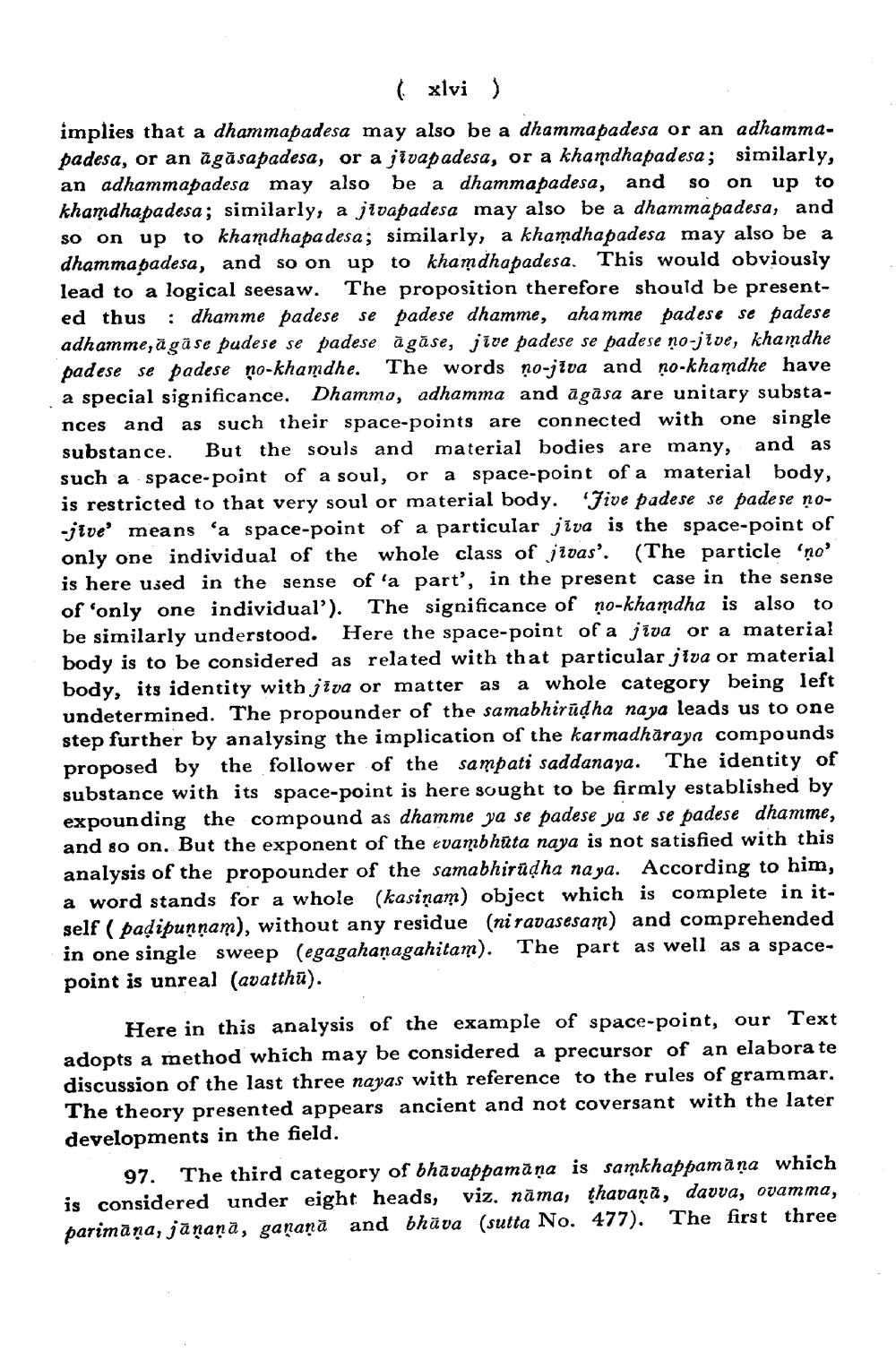________________
xlvi ) implies that a dhammapadesa may also be a dhammapadesa or an adhammapadesa, or an ägäsapadesa, or a jivapadesa, or a khamdhapadesa; similarly, an adhammapadesa may also be a dhammapadesa, and so on up to khamdhapadesa; similarly, a jivapadesa may also be a dhammapadesa, and so on up to khamdhapadesa; similarly, a khamdha padesa may also be a dhammapadesa, and so on up to khamdhapadesa. This would obviously lead to a logical seesaw. The proposition therefore should be presented thus : dhamme padese se padese dhamme, ahamme padese se padese adhamme, ägāse pudese se padese ā gāse, jive padese se padese no-jive, khamdhe padese se padese no-khamdhe. The words ņo-jiva and ņo-khamdhe have a special significance. Dhamma, adhamma and agāsa are unitary substances and as such their space-points are connected with one single substance. But the souls and material bodies are many, and as such a space-point of a soul, or a space-point of a material body, is restricted to that very soul or material body. Jive padese se pade se no-jive' means 'a space-point of a particular jīva is the space-point of only one individual of the whole class of jīvas'. (The particle ino' is here used in the sense of 'a part', in the present case in the sense of 'only one individual'). The significance of ņo-khamdha is also to be similarly understood. Here the space-point of a jiva or a material body is to be considered as related with that particular jiva or material body, its identity with jiva or matter as a whole category being left undetermined. The propounder of the samabhirüdha na ya leads us to one step further by analysing the implication of the karmadharaya compounds proposed by the follower of the sampati saddanaya. The identity of substance with its space-point is here sought to be firmly established by expounding the compound as dhamme ya se padese ya se se padese dhamme, and so on. But the exponent of the evambhūta naya is not satisfied with this analysis of the propounder of the samabhirudha na ya. According to him, a word stands for a whole (kasinam) object which is complete in itself ( padipunnam), without any residue (ni ravasesam) and comprehended in one single sweep (egagahanagahitam). The part as well as a spacepoint is unreal (avatthū).
Here in this analysis of the example of space-point, our Text adopts a method which may be considered a precursor of an elabora te discussion of the last three nayas with reference to the rules of grammar. The theory presented appears ancient and not coversant with the later developments in the field.
97. The third category of bhavappamāna is samkhappamāṇa which is considered under eight heads, viz, nāma, thavana, davva, ovamma, parimāna, jānana, ganana and bhāva (sutta No. 477). The first three




